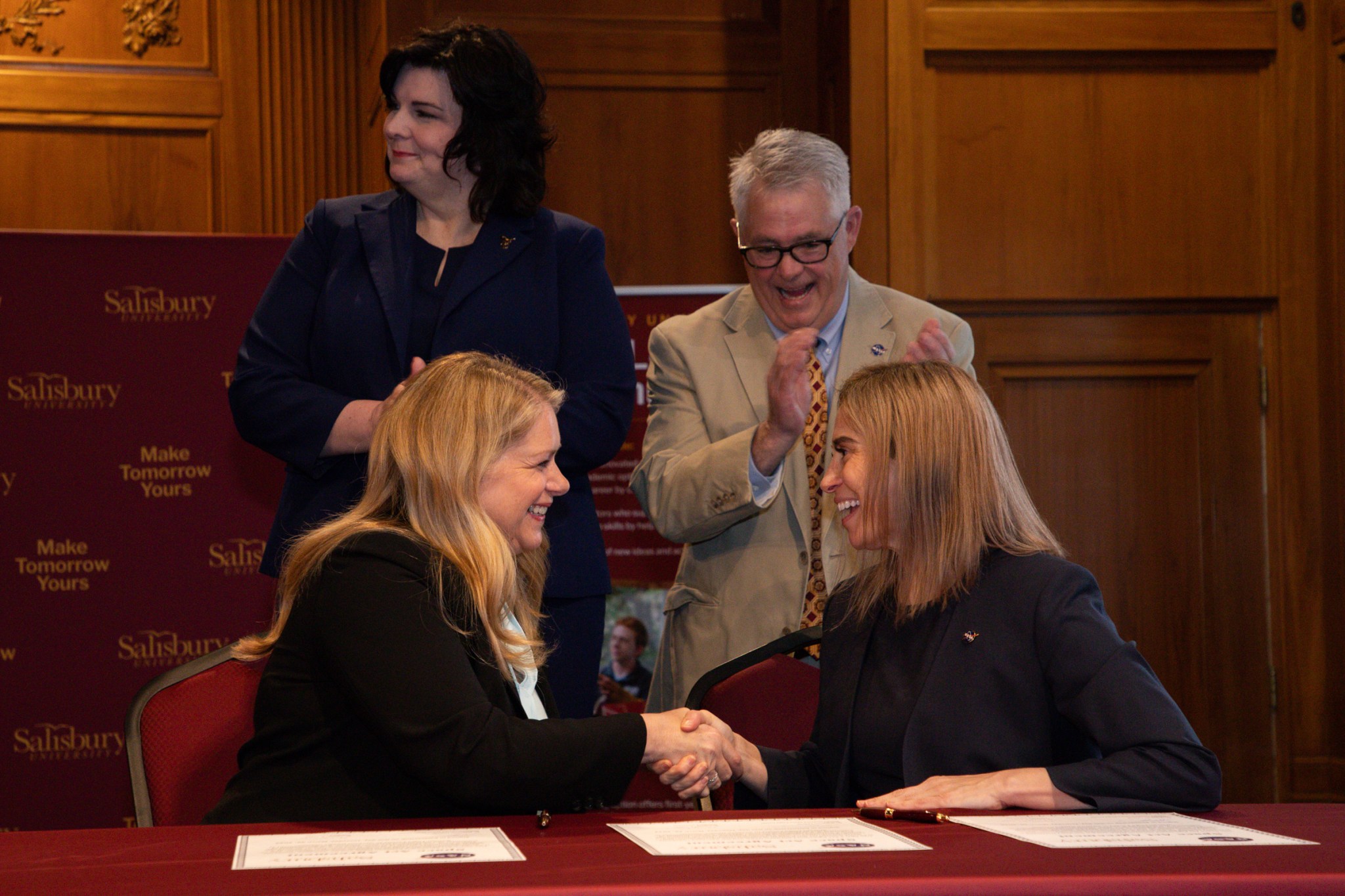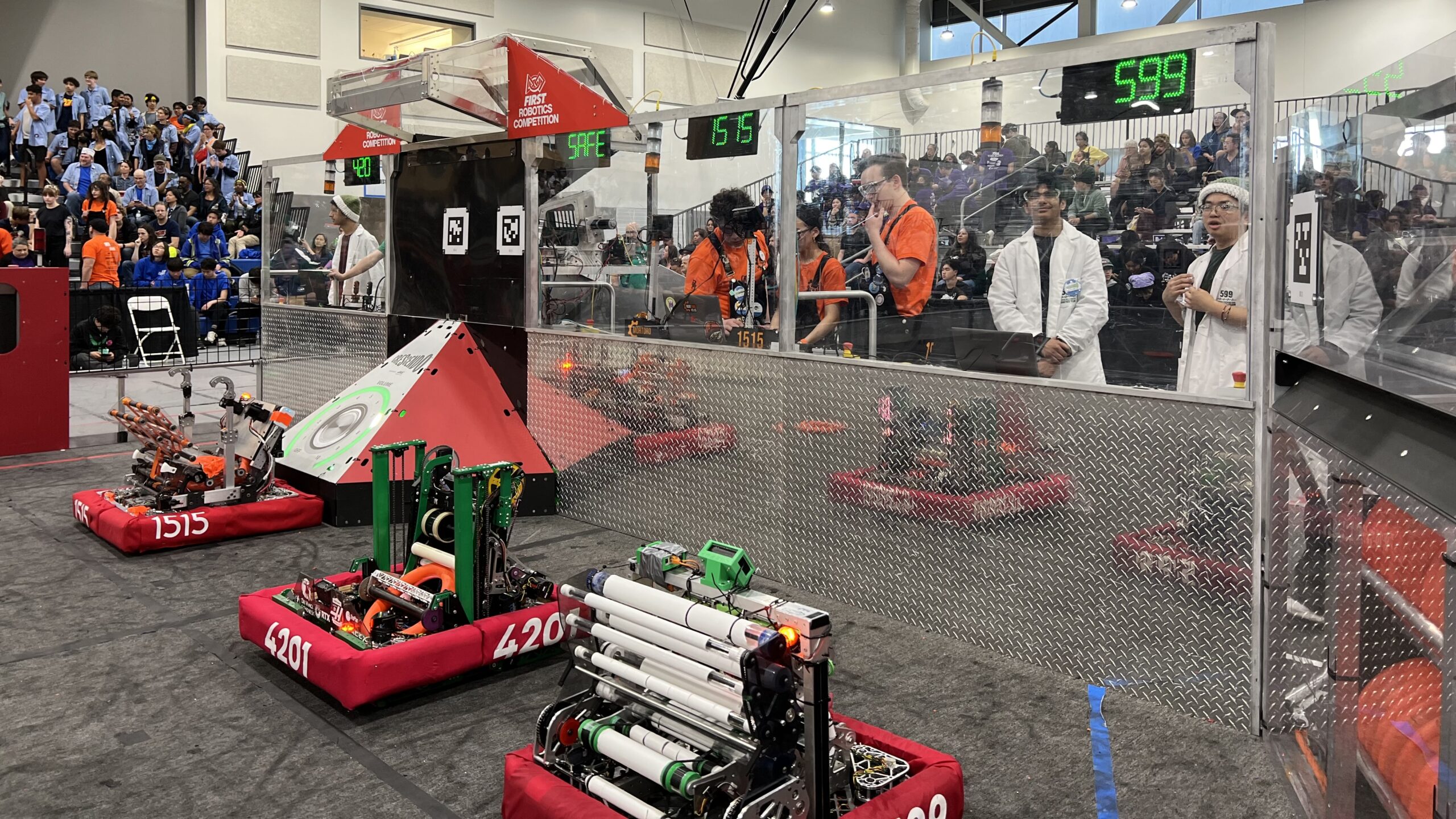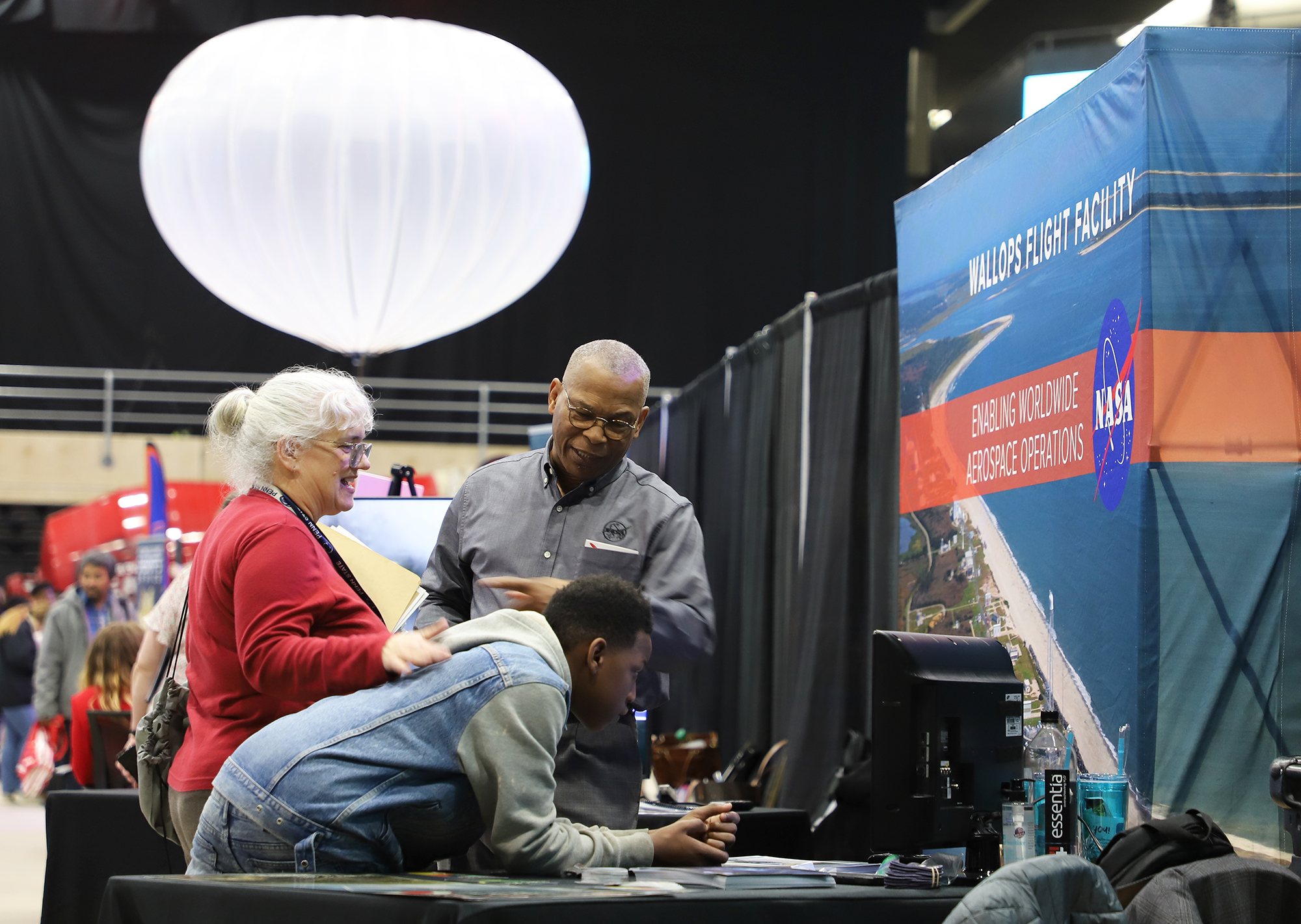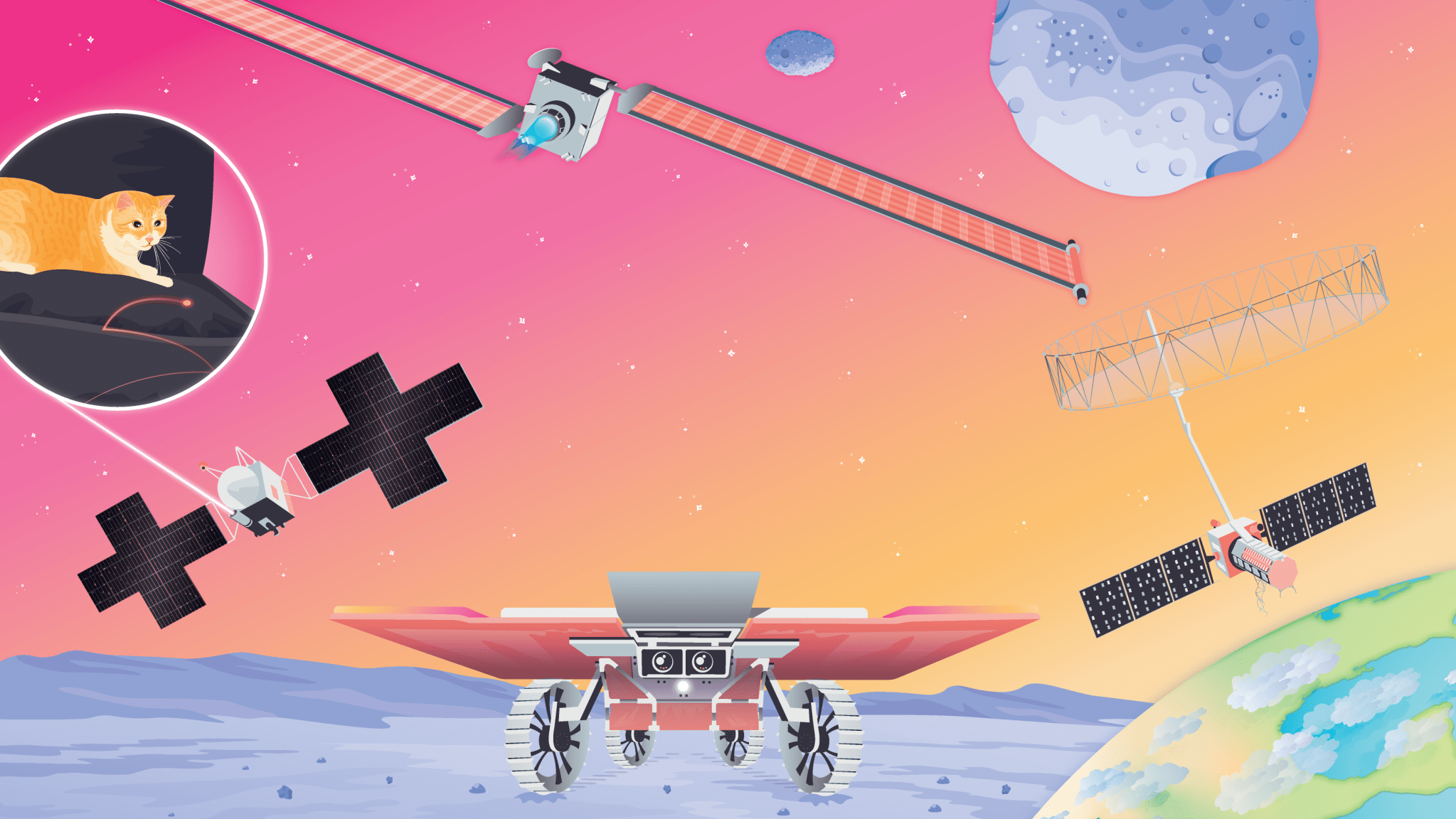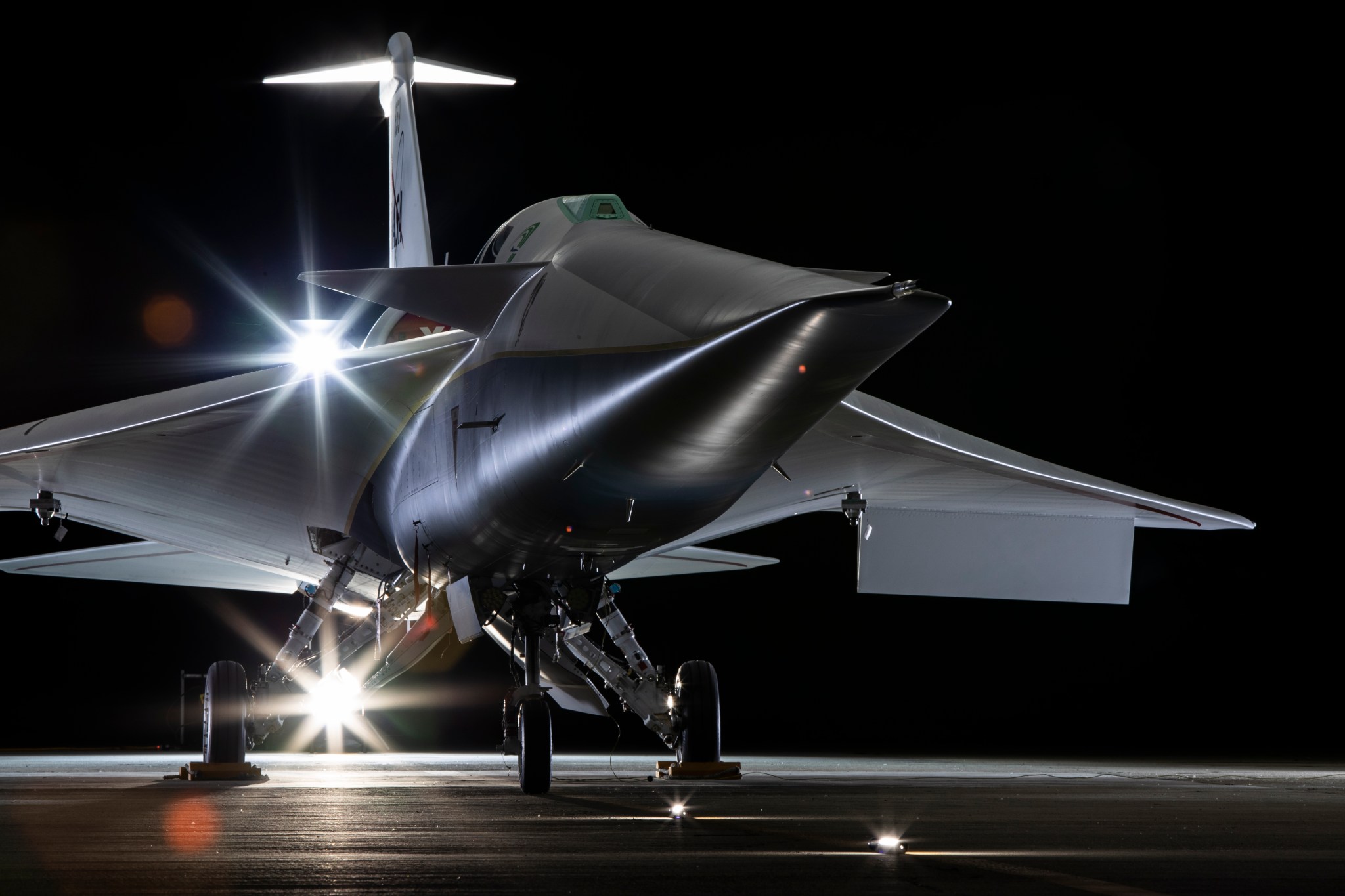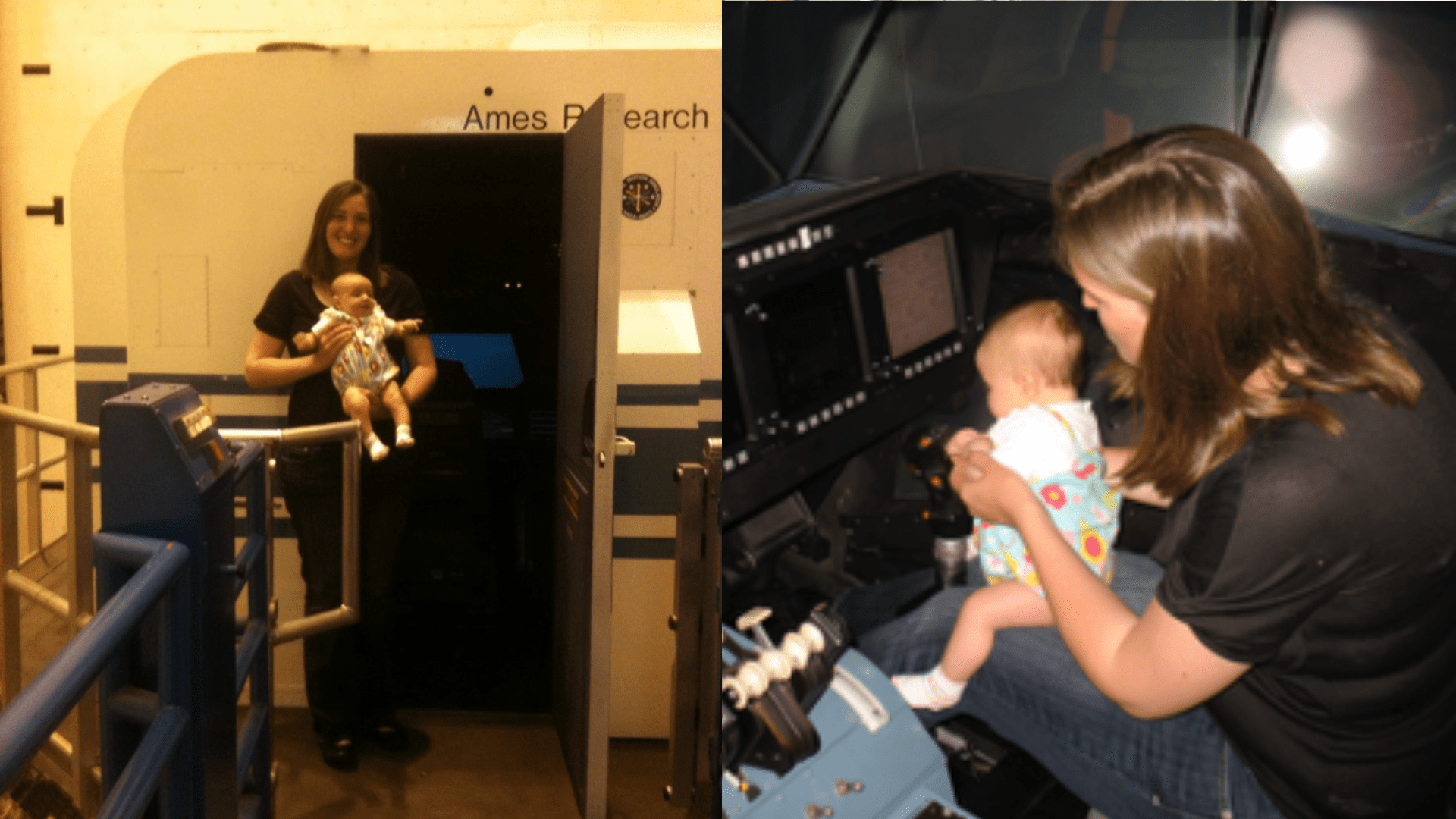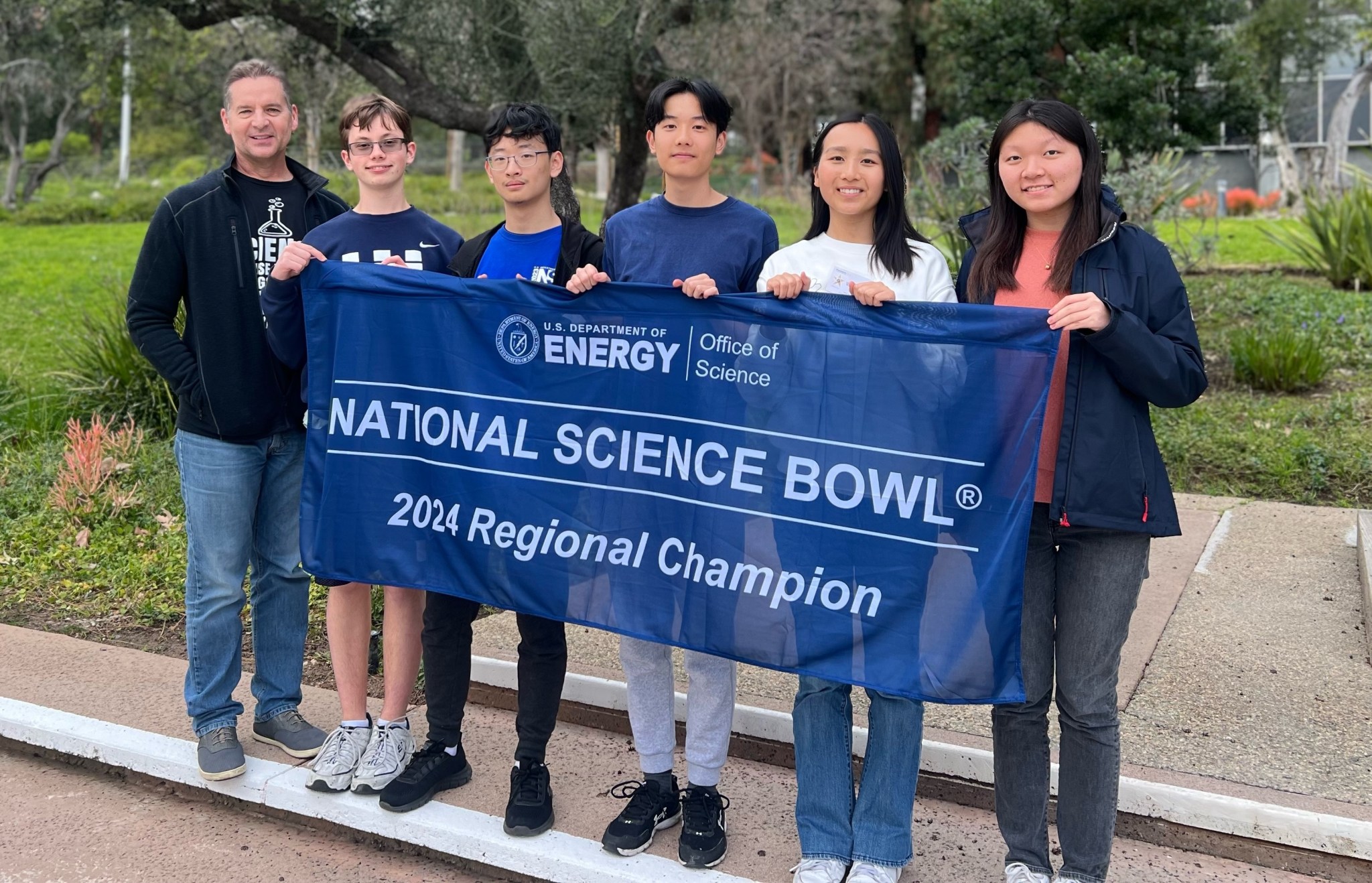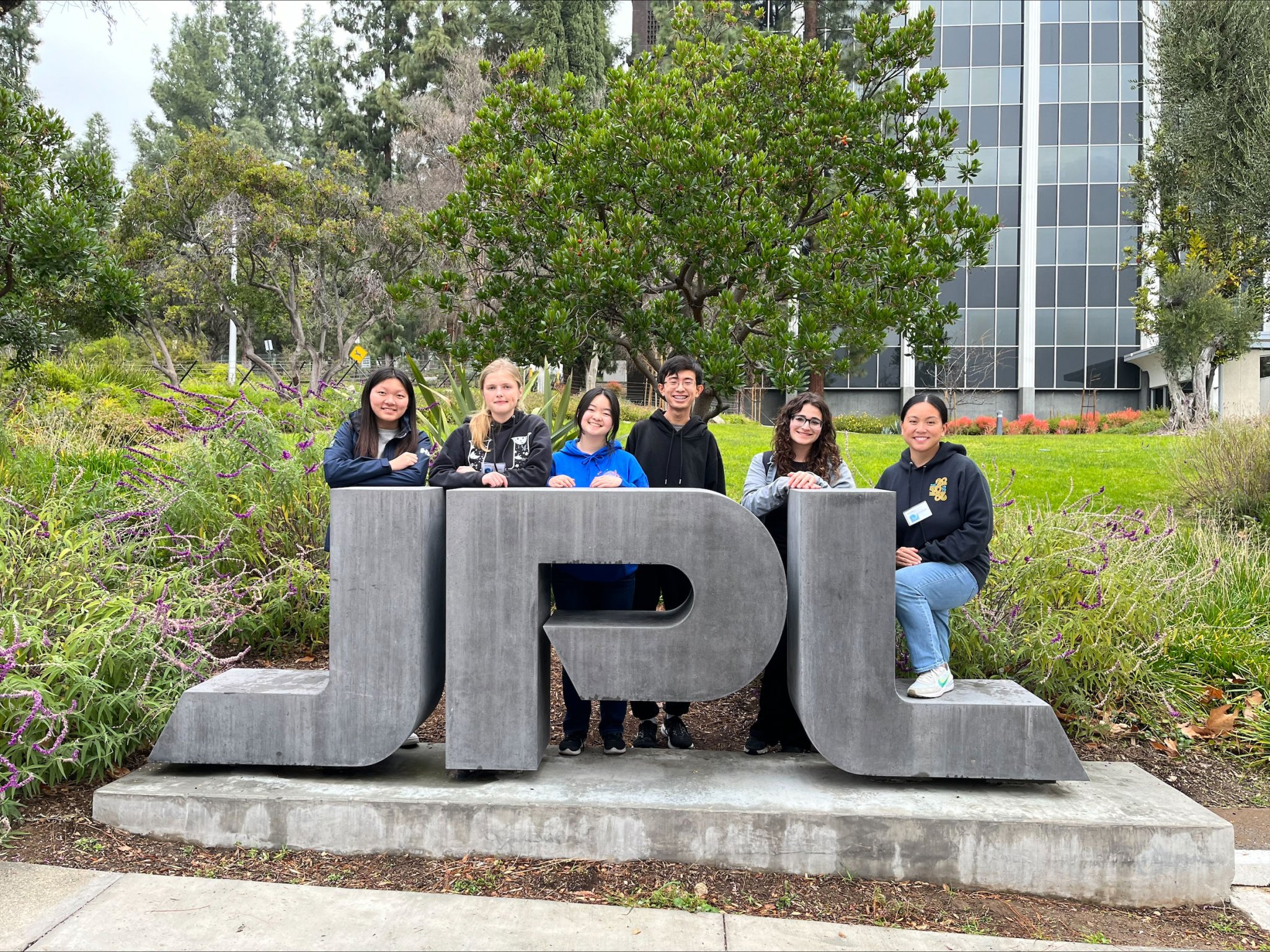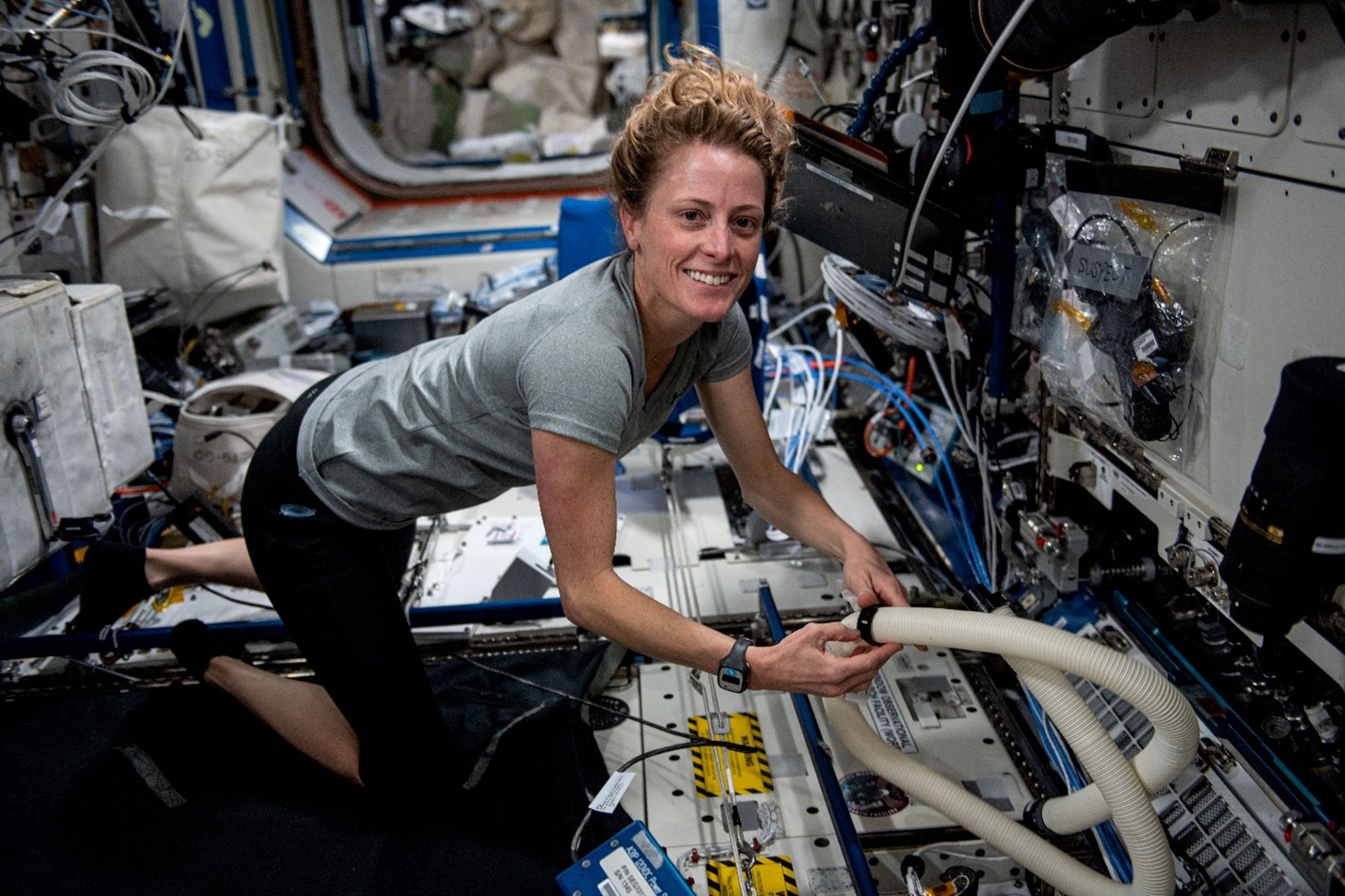2 min read Preparations for Next Moonwalk Simulations Underway (and Underwater) NASA and Salisbury University (SU) in Maryland signed a collaborative Space Act Agreement Thursday, March 28, 2024, opening new opportunities at the agency’s Wallops Flight Facility in Virginia for students in science, technology, engineering, and mathematics (STEM) fields. NASA’s Goddard Space Flight Center Director Dr. Makenzie Lystrup (right) shakes hands with Salisbury University President Dr. Carolyn R. Lepre during the SU Space Act Agreement signing ceremony held in Salisbury, Md., Thursday, March 28, 2024. Provost and Senior Vice President…
Read MoreTag: STEM Engagement at NASA
Student-Built Robots Clash at Competition Supported by NASA-JPL
Teams prepare for a playoff match at the L.A. regional FIRST Robotics Competition in El Segundo on March 17. The robots, built by high school teams, would go on to face off with three other robots being staged at the other end of the playing field. NASA/JPL-Caltech The robots clash six at a time – in two alliances of three robots – on a playing field of about 54 feet by 26 feet in the FIRST Robotics Competition. The human competitors can sport color-coordinated outfits, face paint, and pompoms. NASA/JPL-Caltech…
Read MoreNASA Wallops Offers Career Inspiration to Delmarva Students
3 min read Preparations for Next Moonwalk Simulations Underway (and Underwater) Roland Wescott, representing the range at NASA Wallops, engages with participants during the Junior Achievement Inspire event at the Wicomico Youth & Civic Center. NASA/Olivia Littleton NASA’s Wallops Flight Facility, partners, and area employers joined forces on a mission to inspire more than 4,500 eighth-grade students seeking answers to all questions “career” at the 2024 Junior Achievement (JA) Inspire event. The annual career-exploration event was held March 12-13 at the Wicomico Youth and Civic Center in Salisbury, Maryland, featuring…
Read MoreNASA Pi Day Challenge Serves Up a Mathematical Marvel
2 min read Preparations for Next Moonwalk Simulations Underway (and Underwater) In celebration of the mathematical constant pi, JPL is releasing the annual NASA Pi Day Challenge: a set of illustrated math problems involving real-world science and engineering aspects of agency missions. NASA/JPL-Caltech Celebrate one of the world’s most famous numbers with a set of math problems involving real space missions, courtesy of the agency’s Jet Propulsion Laboratory. March 14 marks the annual celebration of the mathematical constant pi, aka the Greek letter π. Its infinite number of digits is…
Read MoreArtemis Generation Students Inspired During NASA STEM Event
Pascagoula (Mississippi) High School students stand in front of the Thad Cochran Test Stand at NASA’s Stennis Space Center on Feb. 22 during a Next Gen STEM Explore Stennis event focused on computer science and how it impacts propulsion test work onsite. NASA/Danny Nowlin Hancock County (Mississippi) Career Technical Center students stand in front of the Thad Cochran Test Stand at NASA’s Stennis Space Center on Feb. 22 during a Next Gen STEM Explore Stennis event focused on computer science and how it impacts propulsion test work onsite. NASA/Danny Nowlin…
Read MoreNASA Grants to Engage Students in Quiet Supersonic Community Overflight
NASA’s X-59 quiet supersonic research aircraft is dramatically lit for a “glamour shot,” captured before its Jan. 12, 2024, rollout at Lockheed Martin’s Skunk Works facility in Palmdale where the airplane was constructed. Credit: Lockheed Martin / Michael Jackson NASA has issued new grants to five universities to help develop education plans for the community overflight phase of the agency’s Quesst mission, which aims to demonstrate the possibility of supersonic flight without the typical loud sonic booms. The new grants, from NASA’s Office of STEM Engagement, will provide each university…
Read MoreMath, Mentorship, Motherhood: Behind the Scenes with NASA Engineers
Engineering is a huge field with endless applications. From aerospace to ergonomics, engineers play an important role in designing, building, and testing technologies all around us. We asked three engineers at NASA’s Ames Research Center in California’s Silicon Valley to share their experiences, from early challenges they faced in their careers to the day-to-day of being a working engineer. Give us a look behind the curtain – what is it like being an engineer at NASA? In her early days at NASA, Diana Acosta visited her aeronautics research and development…
Read MoreUniversity High School Wins Regional Science Bowl at NASA’s JPL
The 2024 National Science Bowl regional competition hosted by JPL included 21 schools, with this team from Irvine’s University High School taking first place. From left, coach David Knight, Feodor Yevtushenko, Yufei Chen, Nathan Ouyang, Wendy Cao, and Julianne Wu. NASA/JPL-Caltech After months of preparation, more than 100 students competed at the fast-paced annual academic competition hosted by NASA’s Jet Propulsion Laboratory. For the second year in a row, a team from Irvine’s University High School claimed victory at a regional competition of the National Science Bowl, hosted Saturday, Feb.…
Read MoreUniversity High Wins L.A. Ocean Sciences Bowl at NASA’s JPL
2 min read Preparations for Next Moonwalk Simulations Underway (and Underwater) The team from University High School in Irvine, California, proved victorious in the 2024 Los Angeles regional Ocean Sciences Bowl tournament at NASA’s Jet Propulsion Laboratory. From left: senior Julianne Wu, team captain and senior Maia Kopylova, sophomore Angelina Yan, sophomore Matthew Feng, senior Claudia Kahana, and team coach Ruby-Ann Lopez. NASA/JPL-Caltech The annual competition aims to help students expand their ocean-related knowledge outside the classroom and to become environmental stewards. University High School of Irvine, California, emerged victorious…
Read MoreBoston Students to Hear from NASA Astronaut Aboard Space Station
NASA astronaut and Expedition 70 Flight Engineer Loral O’Hara scrubs spacesuit cooling loops in preparation for a round of spacewalks. NASA Students, staff, and researchers from Massachusetts General Hospital, Harvard Medical School, and two local public schools in Boston will have an opportunity next week to hear from NASA astronaut Loral O’Hara aboard the International Space Station. The Earth-to-space call will air live at 9:55 a.m. EST Tuesday, Jan. 23, on NASA+, NASA Television, the NASA app, and the agency’s website. Learn how to stream NASA TV through a variety of platforms including social…
Read More